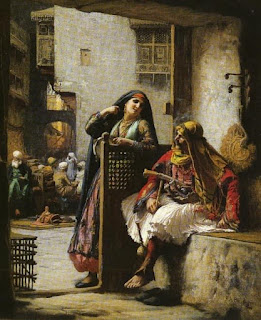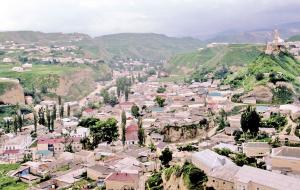Image: Almeh Flirting with an Armenian Policeman, Cairo by Frederick Arthur Bridgman
The Armenians made up a significant portion of the Egyptian slave army known as Mamluks, rising to the ranks of prominent leaders in the Muslim world. The Fatimids of Egypt bought among others, many Armenian slaves, who formed the bulk of their military and often their administration. The powerful vizier Badr al-Jamali, for example, was a mamluk of Armenian origin. As were his descendants (Al-Afdal and others).
Badr al-Jamali (1015-1094) was a vizier and prominent statesman for the Fatimids under the Caliphate and Imamate of Al-Mustansir. Ethnically an Armenian, he was purchased by a Syrian emir, Jamal ud-Dawla, for a relatively small price and converted to Islam. Later he joined Mamluks and was appointed as the governor of Acre during his service. He was appointed Commander of the Armies in 1074 and died in 1094, during which he was the de facto ruler of the Fatimid empire, his authority being over everything except the Caliphate.
Badr’s army, composed of mainly Armenian soldiers, is believed to have been formed after the fall of the Bagratuni capital, Ani (1066) when waves of Armenian refugees sought shelter in other countries. Badr al-Jamali was the first military man to become the vizier (minister) of the Sword and the Pen, thus setting the trend for a century of mostly Armenian viziers with the same monopoly of civilian and military powers.
Badr Al-Jamali built many structures, including:
– Al-Jam`e Al-Juyushi
– Bab al-Futuh
– Bab al-Nasr
– Bab Zuweila
— Paul E. Walker
Image: Almeh Flirting with an Armenian Policeman, Cairo by Frederick Arthur Bridgman



Комментарии
Отправить комментарий